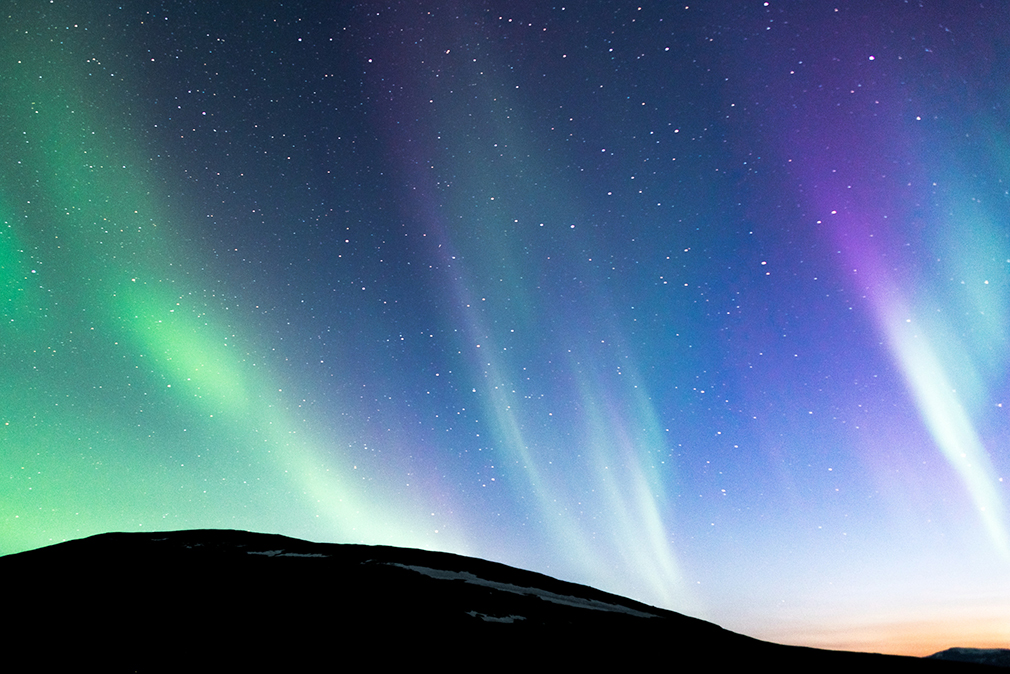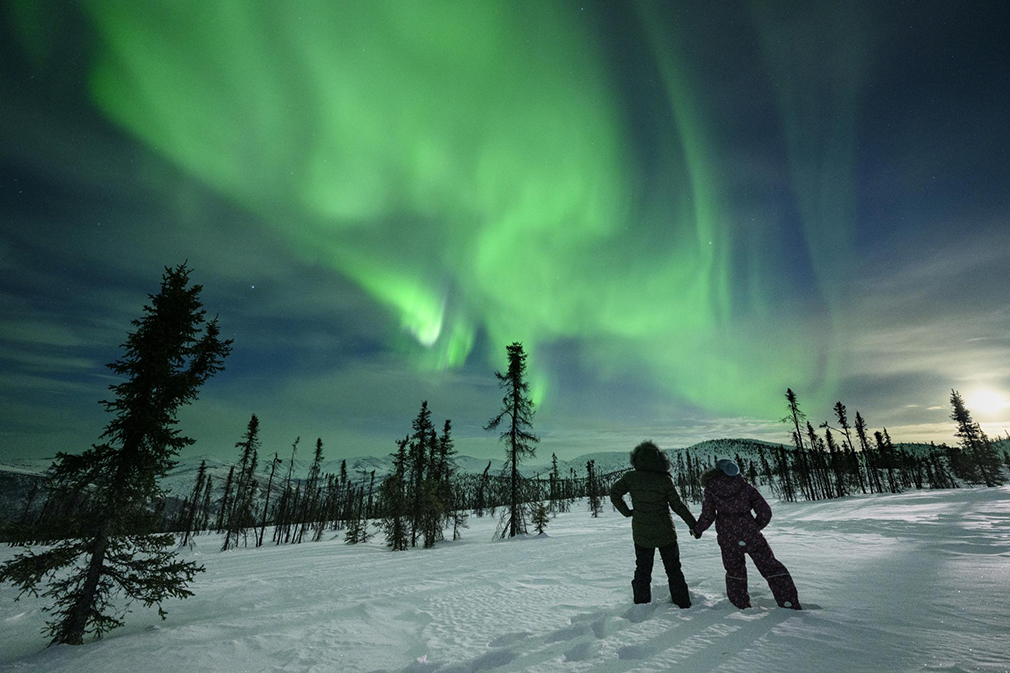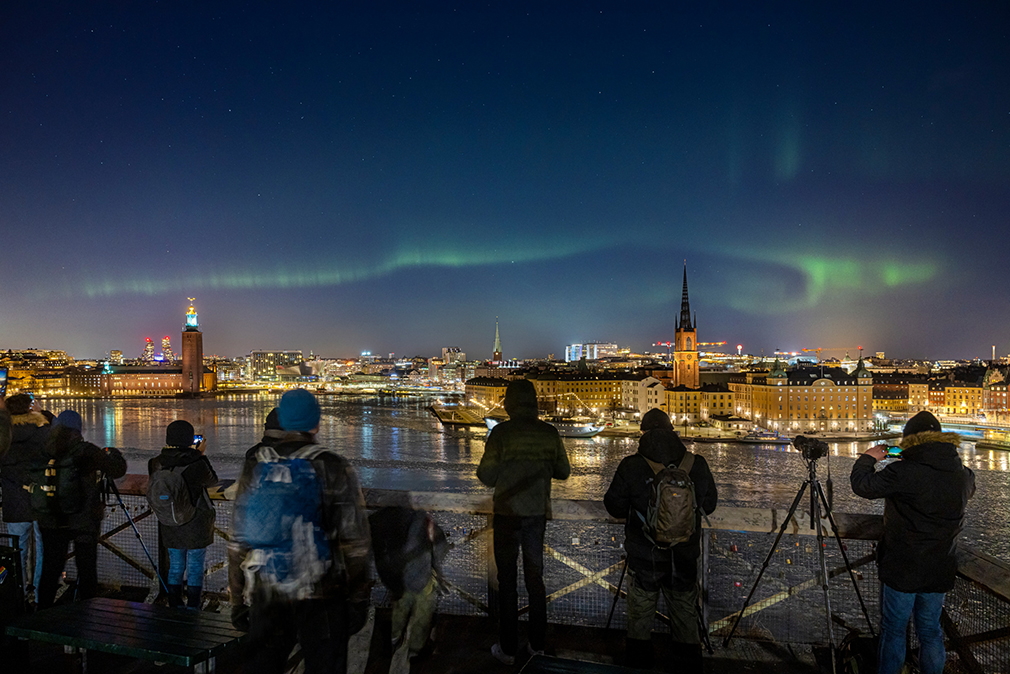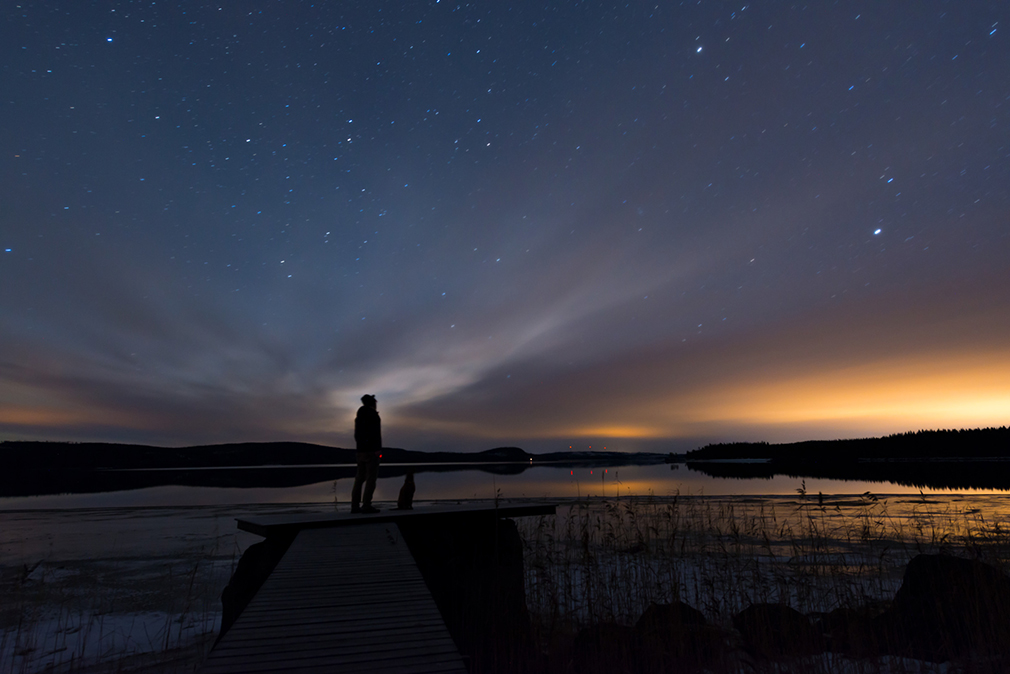There are few guarantees in life and the northern lights, otherwise known by their scientific moniker aurora borealis, are certainly not one of them. This spectacular but frustratingly elusive night show of swirling waves of greenish-violet haze beckons travelers from far and wide to high-latitude regions around the Arctic (and the Antarctic — but for the record, those are the Southern Lights).
The northern lights were discovered by Roman and Greek astronomers and democratically named after the Roman goddess of the dawn (Aurora) and the Greek god of the north wind (Boreas). They appear when electrically charged particles drifting through the earth’s magnetosphere butt heads with the nitrogen and oxygen-rich atmosphere; the resulting energy manifests as a form of light. The shifty, impulsive explosion of spectral-like luminescence floors those who are lucky enough to get a glimpse. It’s far from an exact science, but the stunning show is vaguely predictable; head to the following five locales and settle in for the evening or two. Will they or won’t they appear? That is the question.

Alaska
Fairbanks is one of the world’s aurora capitals, thanks to its position just under the aurora oval (a massive atmospheric footprint above the geomagnetic North Pole created by magnetic fields). North or south of here, the lights appear less consistently, but Fairbanks proper welcomes these ghostly green waves some 240 days per year. (Avoid the Alaskan summer – the Midnight Sun and Aurora Borealis are not friends.)
Where to Stay: Aurora Villa, with its floor-to-ceiling windows in all seven rooms and a 10 p.m. lights-out policy to reduce light pollution, makes for a cozy and modern northern lights retreat.

Canada
Canadians flock to the Northwest Territories north of Alberta for the country’s best view of the northern lights. The area around the provincial capital of Yellowknife (some 1,000 miles east of Fairbanks) is blessed with this radiant phenomenon around 240 days per year, including occasional summer appearances.
Another Canadian favorite is Churchill, Manitoba, which also sits just under the aurora oval 1,256 miles north of Winnipeg. The city is surrounded by water on three sides, which reduces light pollution.
Where to Stay: Churchill Northern Studies Centre is a working research center 14 miles east of Churchill with virtually no light pollution and a heated indoor viewing dome for overnight guests.

Iceland
As the northern lights are usually visible above latitudes of 60° north, Iceland’s position at 64° north makes it one of the world’s best and most popular spots for chasing aurora borealis. Between September and April, head to the area around Jökulsárlón glacier lagoon and/or Vatnajökull National Park, 236 miles or so east of Reykjavík. This area is considered Iceland’s gold standard for viewing northern lights, though you can see them in plenty of other locations, including the Snæfellsnes peninsula, Þingvellir National Park, Westfjords, and even Reykjavík – anywhere, really. Nearly every hotel in the country can set you up with a light-chasing tour, too. Like Alaska, the low population density (just under 400,000 people live in an area about the size of Kentucky) helps keep light pollution at bay, adding to the aurora appeal here.
Where to Stay: Hotel Ranga, 64 miles east of Reykjavík, has an in-house observatory stocked with high-powered telescopes, while Guesthouse Gerði, a superb farmhouse hotel in the countryside, is just eight miles from Jökulsárlón.

Norway
It’s hard to single out a specific Scandinavian country for the best northern lights viewing, as Norway, Sweden, and Finland all sit in geographically similar positions with idyllic conditions for seeing these captivating colors. Tromsø, however, just might trump the lot. Located nearly 700 miles north of Oslo, this beautiful city (and surrounding region) is famed for its fjords, islands, and mountains. It’s also textbook aurora territory, sitting at around 69° north latitude, surrounded by the aurora oval. From mid-September to mid-April, Tromsø serves up a treasure trove of spectacular luminescence. Northern lights-focused arctic camping, night dinner cruises, and reindeer sledding are just a few of the activities offered in the Arctic Circle’s third-largest city.
Where to Stay: The Tromso Ice Domes Hotel, 59 miles south of the city in the Tamok Valley, is an ice suite wonderland specifically designed for north light viewing, with reindeer skin comforters to keep things snug at night. Lyngen Experience Lodge isn’t in Tromsø proper but rather on the Lyngen peninsula 52 miles northeast of the city (read: low light pollution). Here Sami lavvus tents are tucked away outside the main lodge – an exclusive outdoor northern light theater in the woods!

Sweden
Some 124 miles north of the Arctic Circle, the small village of Abisko is considered Sweden’s top spot for aurora chasing. Head straight for the chair lifts up Mt. Nuolja to the Aurora Sky Station, a large outdoor terrace and a lookout tower nearly 3,000 feet above sea level. The region’s municipal seat 57 miles south at Kiruna holds its own as well and surely offers better nightlife to accompany the light show. The sweet spot here is between September and March.
Where to Stay: It’s not exactly convenient for Kiruna or Abisko, but Arctic Bath, 172 miles south of Kiruna, is our favorite Swedish Lapland hotel for its six floating cabins on the Lule River, all with panoramic windows for optimal views. In Kiruna proper,
Máttaráhkká Northern Lights Lodge is another pristine choice. Experience the show from a comfortable outdoor hot tub or chase the lights on a snowmobile.










